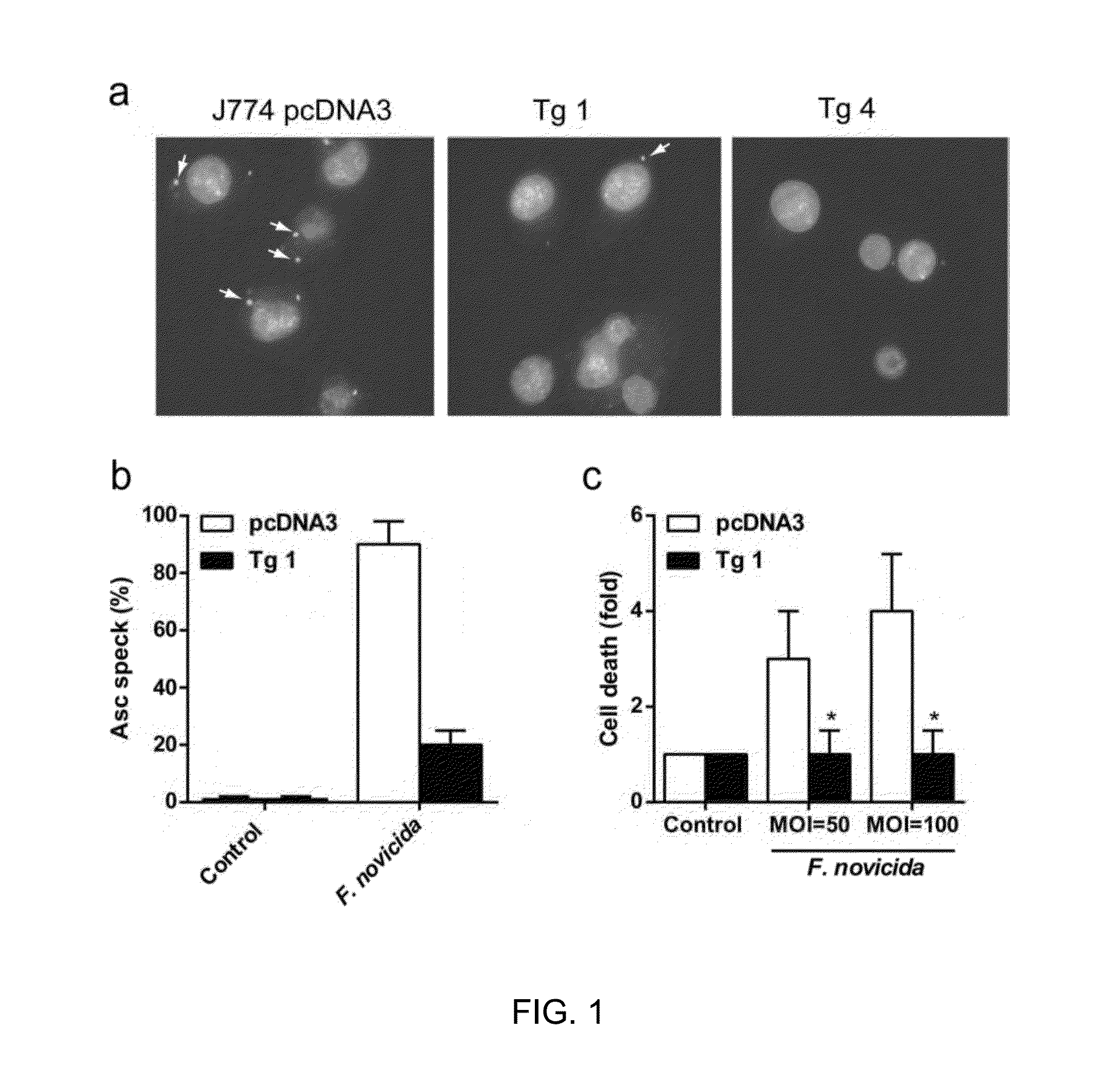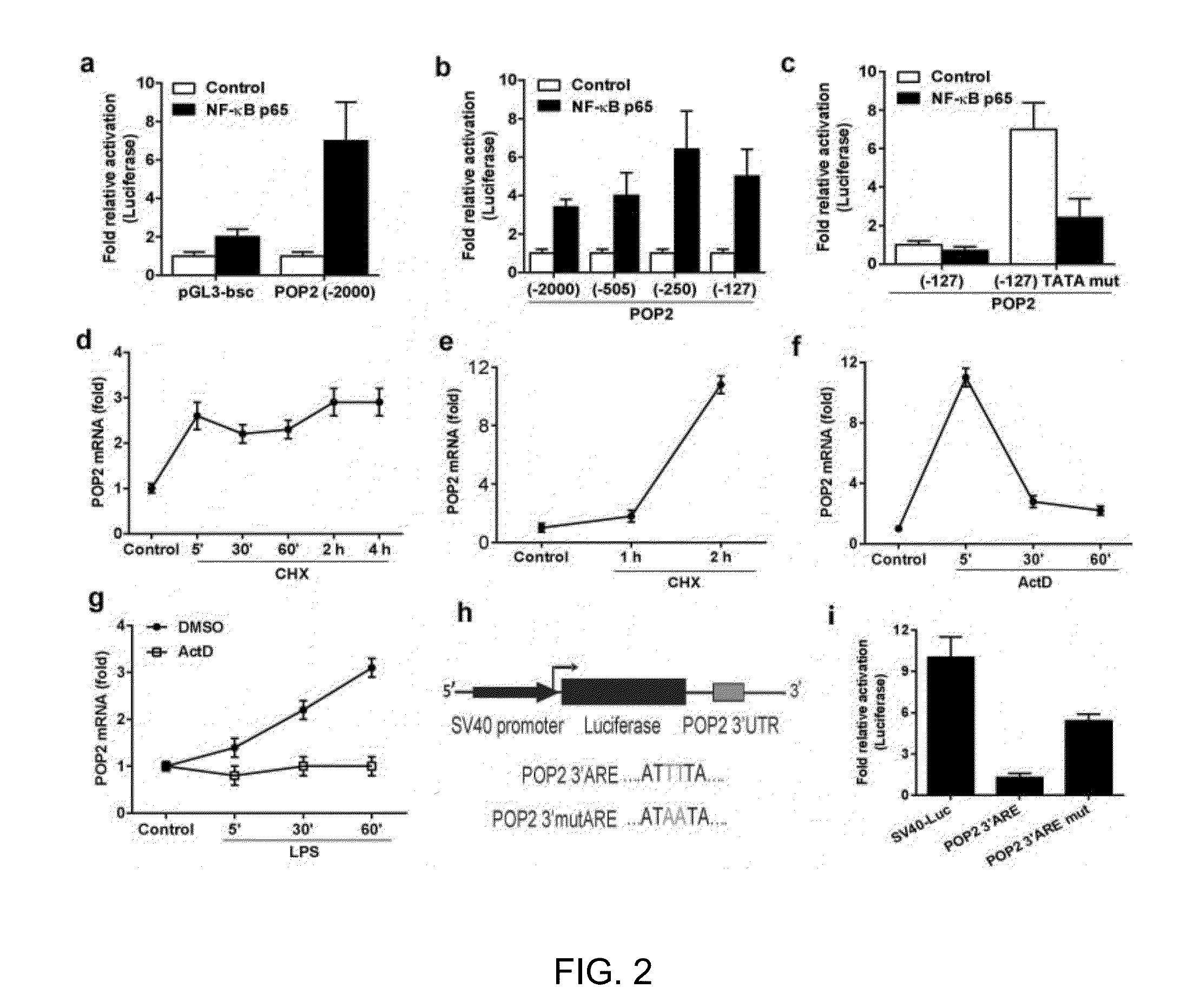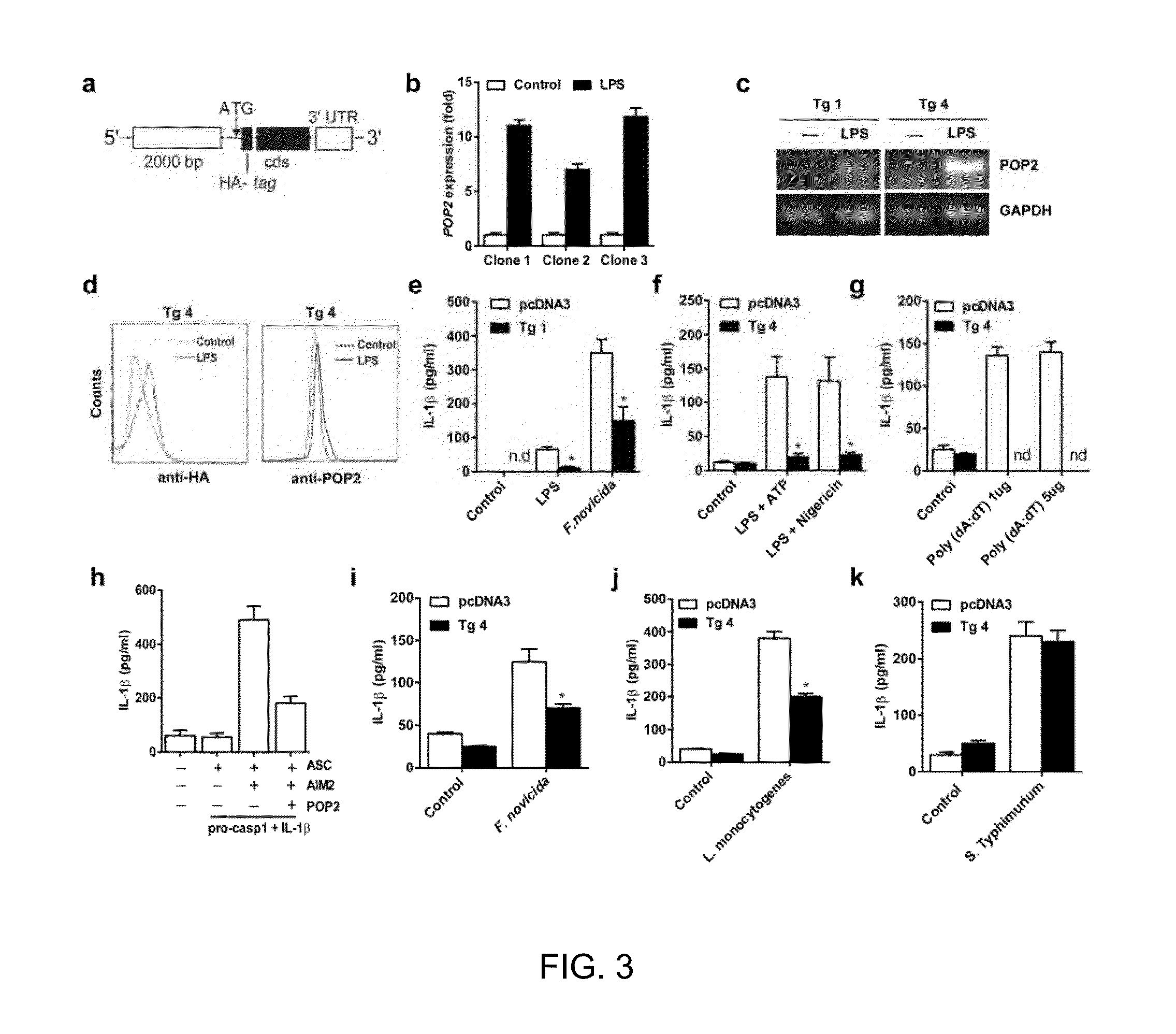Humanized mice expressing the pyrin domain only protein 2
a human pyrin domain and mouse technology, applied in animal husbandry, biochemistry apparatus and processes, fermentation, etc., can solve the problems of limited exploration of pop2 function to date, and inability to express pyrin domain only protein 2, etc., to achieve less susceptible to acute inflammation, and loss of body weight
- Summary
- Abstract
- Description
- Claims
- Application Information
AI Technical Summary
Benefits of technology
Problems solved by technology
Method used
Image
Examples
example
Characterization of Genetic Regulatory Elements Controlling Human POP2 Expression
[0036]Human POP2 is a small (97 aa) protein encoded by a primate-restricted single exon gene on chromosome 3. Because POP2 inhibits NF-kB and NLRP3 inflammasome activity and reduces TNFα and IL-1β production by macrophages, functionally POP2 is thought to regulate inflammatory processes in vivo. Although POP2 expression is increased several fold in THP-1 cells and primary human monocytes treated with LPS, PMA or TNFα, the genetic element that controls POP2 expression is unknown. As these stimuli mimick the inflammatory environment and strongly induce NF-κB activation, it is presumed that POP2 expression might be regulated by NF-κB. To test this theory, the POP2 genomic locus upstream of the ATG start codon was analyzed and, as a result, two NF-κB consensus binding sequences and a putative TATA box element was identified at −24, −36, and −82 nt upstream of the POP2 ATG start codon, respectively, as seen ...
PUM
| Property | Measurement | Unit |
|---|---|---|
| microscopy | aaaaa | aaaaa |
| frequency | aaaaa | aaaaa |
| size | aaaaa | aaaaa |
Abstract
Description
Claims
Application Information
 Login to View More
Login to View More - R&D
- Intellectual Property
- Life Sciences
- Materials
- Tech Scout
- Unparalleled Data Quality
- Higher Quality Content
- 60% Fewer Hallucinations
Browse by: Latest US Patents, China's latest patents, Technical Efficacy Thesaurus, Application Domain, Technology Topic, Popular Technical Reports.
© 2025 PatSnap. All rights reserved.Legal|Privacy policy|Modern Slavery Act Transparency Statement|Sitemap|About US| Contact US: help@patsnap.com



